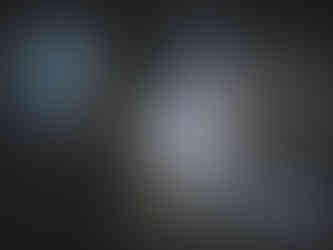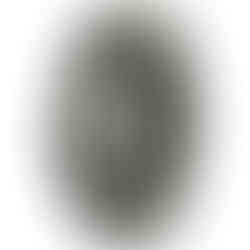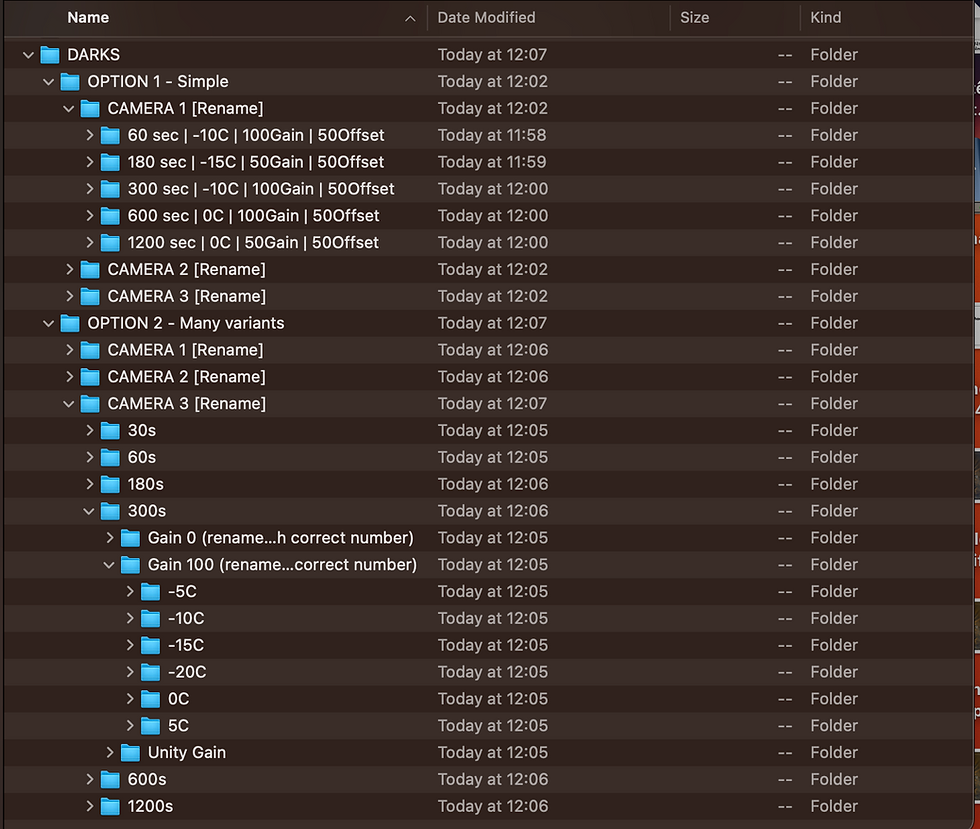Full Astrophotography Setup under $1,200: Is it possible?
- Antoine & Dalia Grelin

- Mar 12, 2020
- 8 min read
Updated: Jun 6, 2023
What is the best possible astrophotography rig you can buy when on a tight budget? In this guide, we will go over the different pieces of equipment you will or will not need to start deep sky imaging with a telescope. For this particular guide, we will focus on the most affordable possible gear while making sure that the chosen set is still of high quality.

It is no secret that Astrophotography is an expensive hobby. It took us a long time to be able to afford a full astrophotography rig but in the end, it is one that lasted us for years as we are still using it today.
We've said it a thousand times: you can start astrophotography and get fantastic images of deep sky objects with just a camera and tripod. This is how we started and how we got our first pics of the Orion Nebula, the Andromeda Galaxy, and the Pleiades star cluster.
Before we were able to make the big purchase, we practiced wide-field astrophotography with a cheap DSLR camera and a tripod. We then upgraded to a star tracker which was a game changer as we were able to take long exposure shots of deep sky objects.
We have a full guide about the best beginner astrophotography equipment you can read, and we also have a video on our YouTube demonstrating how to capture galaxies and nebulae using just a DSLR camera and a tripod, without a telescope.
Are you ready to make the jump and purchase your first astrophotography telescope? If you are on a tight budget, this guide should help you decide on what to buy! If you are not on a tight budget, good for you! In this case, head over to our telescope buying guide or full equipment guide.
Important: Prices may have fluctuated since we wrote this post.
What Will You Need?
The screenshot below shows our cart when we bought our very first set of equipment. As you can see, the total amount almost reached three thousand dollars.
Don't worry though, you do not need so many pieces in order to have a correct rig, and we'll tell you why.

A typical Astrophotography setup is made of:
A Telescope
A motorized German equatorial mount
A camera
A couple of adapters to attach the camera to the telescope
An Auto-guiding package
A way to power the equipment
Because this guide was written with the intent to build the cheapest possible rig, we will be getting rid of the two last items in this list: the auto-guiding and the power.
Auto-guiding: The telescope we will be choosing later is a small refractor that has a wide field of view. This means guiding is not critical and does not necessarily need to be used as long as your polar alignment is great. We still suggest adding it to the equipment in the future though.
Power: Most beginner astrophotographers are able to take their first shots from their backyard. Because of that, you would not need a battery and can easily plug the mount into a power outlet. If imaging from a far location, you can either use your car battery (we've always been scared to try that but some of our friends do it all the time...) or use a mount that only requires triple-A batteries (more info later in this post).
Let's now hunt for the most affordable, high-quality pieces of equipment a beginner astrophotographer on a budget can buy to get started in deep sky imaging.
The Telescope - $478
We have a full guide on what the best beginner telescopes are for any kind of budget, which you should check out! The one we will pick out for this tutorial is one that was listed there as well: a small refractor telescope with a price tag of $478.
Chosen telescope: William Optics ZenithStar 61 f/5.9 Double APO
The William Optics ZenithStar 61 f/5.9 Double APO is a very small, light and portable telescope that can be carried around anywhere. It has a wide field of view with a focal length of 360mm.
The ZenithStar 61 comes in 3 different colors (red, blue, or gold) and is one of the best affordable telescopes out there. A Bahtinov mask is even integrated in the cap of the optical tube.
Take a look at images taken with the ZenithStar 61 on Astrobin.
Telescope Specifications
Manufacturer: William Optics
Aperture: 2.5" (61mm)
Focal Length: 360mm
Focal Ratio: f/5.9
Tube weight: 3.2lbs
Tube length: 230mm
Price: $478
The Mount - $329
An astrophotography mount needs to be motorized, equatorial, and very sturdy.
It was a little bit tricky to pick a good mount because "sturdy" and "cheap" often don't go well together. This guide was written to make you save money, not waste it on a cheap piece of gear that will end up being replaced in a couple of months. This is why we came up with two options below. One is our "chosen" most affordable mount for this guide, the other is slightly more expensive but better for the long term.
Chosen mount: Sky-Watcher Star Adventurer
The Sky-Watcher Star Adventurer mount is an excellent beginner mount, mostly because of its price and ease of use. Another good thing is that it runs on regular Triple A batteries, so you definitely do not need to bother about having an external battery! The main problem with this mount is the fact that it does not have any GoTo capability, making it difficult to slew to dim and small objects.
If you do not have the money for a great long term mount, this one will work well and help you get familiar with how equatorial mounts work. It will also force you to learn how to star hop to find your target which, in our opinion, is a good thing when you're beginning!
Mount Specifications
Manufacturer: Sky-Watcher
Payload Capacity: 11 lbs
Price: $329
Option 2: Celestron AVX mount
If you are completely turned off by the lack of GoTo capabilities in the Sky-Watcher Star Adventurer mount, but still need an affordable mount, the Celestron AVX is probably your best option. More expensive but cheaper than most other mounts, the Celestron AVX also has a higher payload capacity than the Sky-Watcher Star Adventurer at 30 lbs.
Mount Specifications
Manufacturer: Celestron
Payload Capacity: 30 lbs
Price: $799
Note: Option 2 already comes with a tripod, but not Option 1. If you choose to get a star tracker, you will also need to account for a sturdy tripod. We recommend the light weight carbon fiber tripod from Apertura. For half the price though, you can get a heavier but also very sturdy tripod from Orion.
The Camera - $130
The best camera for a beginner astrophotographer is obviously a DSLR camera. Preferably one with a high dynamic range, low noise and, while we're at it, a flip screen.
The Canon T3i is by far one of the best, most affordable cameras an amateur astrophotographer can use to get beautiful images of the night sky without breaking the bank.

This is the camera we started with, we bought it on eBay about 4+ years ago for $400. Today, you can get your hands on one of these for much, much cheaper. The screenshot above shows two Canon T3i's on "Buy Now" for about $130!
You may think that the camera is the most important piece of equipment and might not believe that you'll get anything "good enough" for this price. Well, let us prove you wrong. Below are just three images out of many that we took with the Canon T3i. Wouldn't you say these are great for a $130 camera? Oh, and by the way, we did not use a $6000 telescope, ours costs $499.
Make sure to visit our gallery to see more images taken with the T3i.
Adapters - $218
T
he last crucial part we need to complete our full rig is a couple of adapters. These will allow us to attach our camera to our telescope!
Two adapters are needed:
A T-Ring
A Field Flattener
T-Ring: (Canon or Nikon T-Ring) - Several companies make T-Rings. Ours is the Orion T-Ring for Canon cameras and has worked with lots of different adapters. It only costs $19.99.
Field Flattener: A field flattener is important as it ensures that the stars in your images will look pinpoint/round all over. Without it, this particular telescope will show elongated stars around the edges of your frame. The William Optics Z61 Adjustable Flattener was built specifically for the telescope we have chosen earlier, and costs $198.
Video Guide
If you'd like to hear more about the choices behind this setup, make sure to watch the video below!
Final Thoughts
Let's summarize the equipment we have chosen and the total costs of it:
Telescope: William Optics ZenithStar 61 f/5.9 Double APO - $478
Mount: Sky-Watcher Star Adventurer - $329
Camera: Canon T3i - $130
T-Ring: T-Ring for Canon cameras - $20
Field Flattener: William Optics Z61 Adjustable Flattener - $198
Total Cost: $1,155
If you do not already have a sturdy tripod at home, you will spend some extra money to get one! Our favorite tripod around the $100 range is the Orion Paragon Heavy Duty tripod. It is a little heavy, but has a great payload, and has some nice features.
Suggested accessories to add when possible:
It was a lot of fun compiling this equipment. We would love for you guys to let us know if you are able to find a full rig that is of great quality for an even cheaper price. We are wondering if it is possible to get under the $1K mark. If you succeed, make sure to list the gear in the comments below so we can check it out!
Make sure to follow us on Facebook, Instagram, Twitter and YouTube to stay up to date with our work!
Clear Skies,
Galactic Hunter
GALACTIC HUNTER BOOKS
Description: Discover 60 Deep Sky Objects that will considerably improve your Imaging and Processing skills! Whether you are a beginner, intermediate, or advanced astrophotographer, this detailed book of the best deep sky objects will serve as a personal guide for years to come! Discover which star clusters, nebulae, and galaxies are the easiest and most impressive to photograph for each season. Learn how to find each object in the night sky, and read our recommendations on imaging them in a quick and comprehensive way. Each target in this guide contains our advice on imaging, photos of expected results, and a useful information table. We've also included a few cool facts about each target, a map to find it in the night sky, and more!
Description: The Astrophotographer’s Journal is a portable notebook created for the purpose of recording observations, cataloguing photographs, and writing down the wonderful memories created by this hobby. This book contains more than 200 pages to memorialize your stargazing and imaging sessions, as well as a useful chart on the last pages to index exciting or important notes. Read back on the logs to see how much progress you have made through the months, the problems you overcame, and the notes taken to improve in the future. Just as the pioneers of astronomy did in their time, look up and take notes of your observations as you are the author of this star-filled journey.
Description: The Constellations Handbook is a logical guide to learning the 88 constellations. Learning the constellations is difficult. Remembering them is even harder. Have you ever wanted to look up to the night sky, name any pattern of stars and be able to tell their stories? This book groups the constellations in a logical order, so that the reader can easily learn them by their origin, and see how their stories interact with one another as a group. The last pages of this book include an index of all 88 constellations, each with a slot where you can write your own personal tips and tricks in order to memorize them with ease. The Constellations Handbook is not just another guide listing all the constellations from A to Z and their location, it is the perfect companion for stargazing, and a learning journey through the ages.































Comments